Regular pruning of your flowering perennials can enhance both the appearance and wellness of your plants, ultimately giving your garden a more organized look. However, determining the appropriate time to prune these perennials can be challenging since some require pruning in spring while others should only be trimmed in autumn. Therefore, figuring out when and how to prune your garden’s perennial plants could be daunting and a source of confusion for many gardeners.
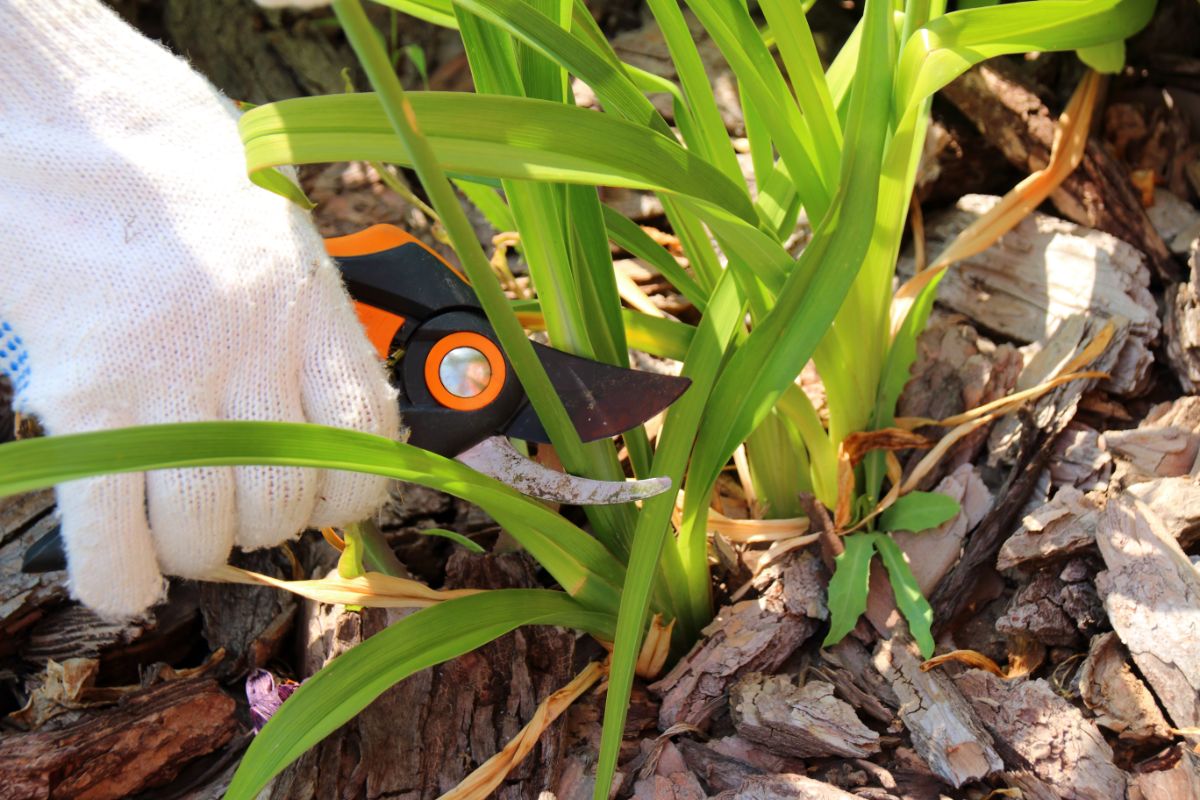
Autumn is a great time to prune certain plant species, although not all of them. To assist you in caring for your plants this season, we’ve put together a brief guide on the most common perennials that should be pruned in the fall. Additionally, you’ll find some easy pruning tips to encourage optimal growth and prevent problems like mildew. The list includes 15 types of plants, such as bearded irises, daylilies, peonies, and catmint. We also answer some frequently asked questions and provide a summary at the end.

It’s important to be aware of which plants to avoid pruning during the fall season, as you could unintentionally remove their spring flower buds. While fall pruning can have several advantages for perennials, including better disease resistance and growth, it’s crucial to prune at the appropriate time to prevent harm to your plants. Pruning too late in the season can leave them vulnerable to winter damage or even death. To help you make informed decisions, we’ve compiled a list of plants that can be safely pruned during autumn, while also providing a comprehensive guide for springtime pruning. One such plant that should be pruned in fall is the Bearded Iris (Iris × germanica).

Pruning irises too early can harm their ability to bloom next year. While irises are a popular landscaping plant for their beautiful summer flowers, gardeners often cut them back after the blooms fade to tidy up their beds. However, trimming them too soon can limit their ability to photosynthesize and get the energy they need to flower again. Waiting until fall, after the first frost when the leaves naturally die away, is best for pruning. It’s important to cut back the leaves in a fan shape along the natural lines of the plant, leaving at least 6 to 8 inches above the crown. This will create an organic look and can also reduce the risk of iris borers overwintering in your garden.

When fall frosts hit, daylilies start to wither away, which is the ideal time to prune them. Just like irises, daylilies can bloom for most of the summer and into early autumn, so some gardeners prune them earlier in the year. However, it’s generally best to wait until they naturally die back before giving them a heavier prune. Cutting them too early can impact their ability to photosynthesize.
After the frost, yellow and mushy leaves make it very easy to remove daylilies by hand or pruner. Cutting the leaves about 4 to 6” above the ground is the best way to prune daylilies. Pruning daylilies in the fall not only improves the appearance of your garden but also makes it much easier to divide them every few years. In the spring, you’ll have better access to your lily plants, making plant division much simpler!
In addition, other lilies (Lilium spp.) can also benefit from pruning after they die back in the fall.
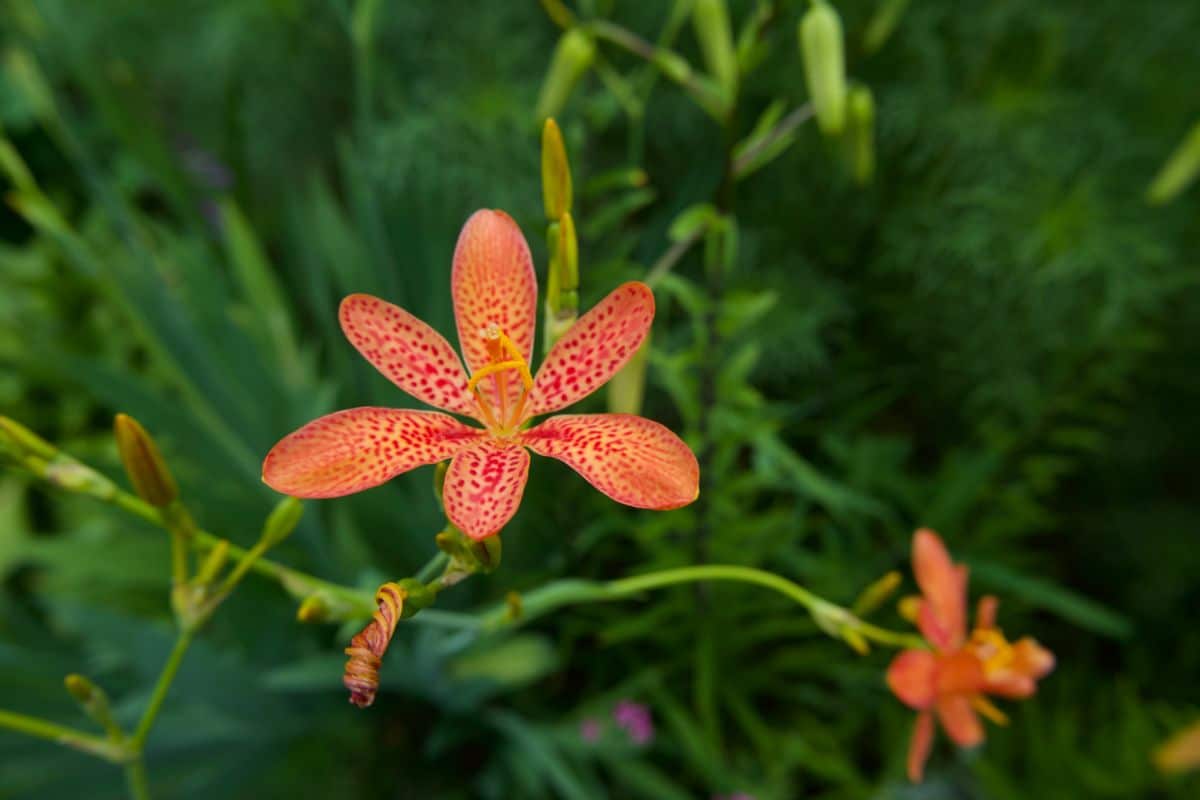
In order to properly care for true lilies, it is recommended to cut them back in the autumn season, just like daylilies. It’s important to note that white daylilies are not considered true lilies, but they do share similar growth requirements. It’s best to wait until after the first frost before pruning back your lilies to ensure that they have had enough time to store energy in their bulbs for spring growth and future flower production. Premature pruning can stunt their growth and reduce the amount of blooms for the following year. Pruning in the fall also helps prevent diseases and pests from surviving in the foliage during the winter months. Additionally, for those who have peonies, they too require proper care and attention to thrive.

To prevent the spread of disease in your peonies, consider doing some fall pruning. Although peonies are beautiful and frequently found in cottage gardens and cutting gardens, they are also susceptible to issues such as powdery mildew, which can linger in garden beds and infect nearby plants. However, you can help keep your peonies healthy by conducting a thorough garden cleanup. If you spot powdery mildew on your peonies, remove any affected foliage immediately. Otherwise, wait until frost rolls around before cutting back your peony plants. Using pruners, clip the stems about three inches above the soil line. Autumn pruning can minimize the risk of mildew and botrytis reoccurring in your garden. It can also simplify your spring gardening maintenance checklist and make it easier to apply fresh mulch. In addition to peonies, tall phlox (Phlox paniculata) is another garden plant worth considering.

In order to prevent downy mildew from affecting your phlox plants in the spring, it’s recommended to prune them during the fall. Powdery mildew is a common issue with phlox, but pruning can help avoid these problems from returning. It’s important to note that if your plants have already been affected, you should not compost any affected plant material as the mildew spores may survive. Instead, burn or throw away the affected leaves. To prune tall phlox, wait until the plant dies back in fall and then clip the stems to about 3 inches above the soil line. Creeping phlox, on the other hand, does not typically require pruning as it is not as susceptible to mildew issues and blooms in the springtime. Another plant that can benefit from pruning is bee balm (Monarda spp.).
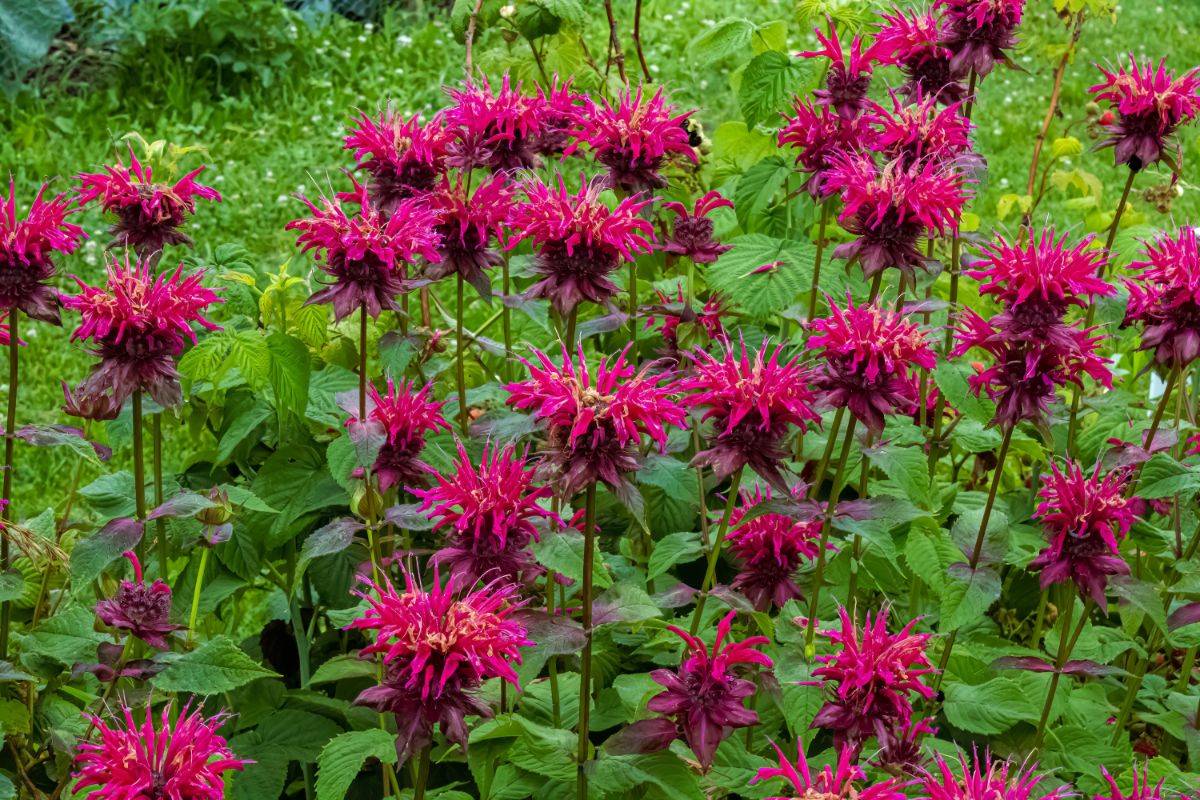
To prevent bee balm from spreading excessively, it is advisable to remove its seed heads during the autumn season. As an excellent pollinator plant, bee balm attracts bees, hummingbirds, and butterflies. However, once the flowering period is over, it produces abundant seed heads that can lead to the proliferation of bee balm plants. To avoid this, cutting back the flower heads before they self-seed is recommended. Nonetheless, some gardeners choose to leave bee balm flowers intact throughout the winter as their seeds are a popular food source for goldfinches and other birds. Ultimately, the decision to prune bee balm is dependent on personal preference. If your bee balm plants were affected by powdery mildew, it is particularly beneficial to trim them in the fall. Similar to peonies and phlox, mildew can survive on bee balm stems over winter and resurface in the spring. However, if the bee balm is cut back about 3 to 5 inches above the soil line during the fall, the chances of mildew reoccurring are significantly reduced.
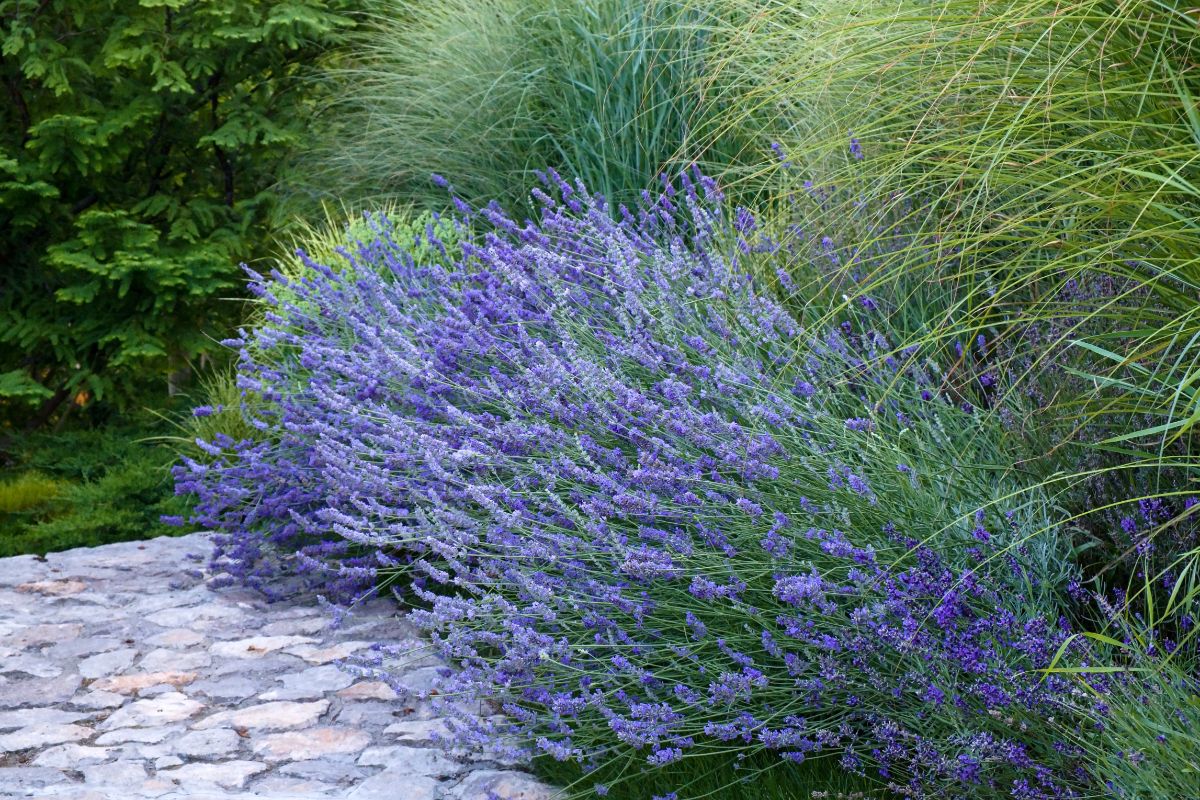
Pruning lavender can be a challenge, but the best time to do it is in the fall. It’s crucial not to prune any later than six weeks before the expected frost to prevent damage to your plants. Lavender only grows on new growth, so over-pruning can hurt or even kill your plant. While you can prune lavender in the spring or fall, autumn pruning is typically more manageable because you’re less likely to over-prune your lavender plants. In the winter, it can be hard to differentiate between old and new growth during spring pruning. Pruning in the fall helps identify the woody part of the plant. Use pruners to cut back and shape your lavender, ensuring you don’t cut stems shorter than two to three inches above the woody section. Also, avoid pruning late as it can make your plants more vulnerable to winter damage.
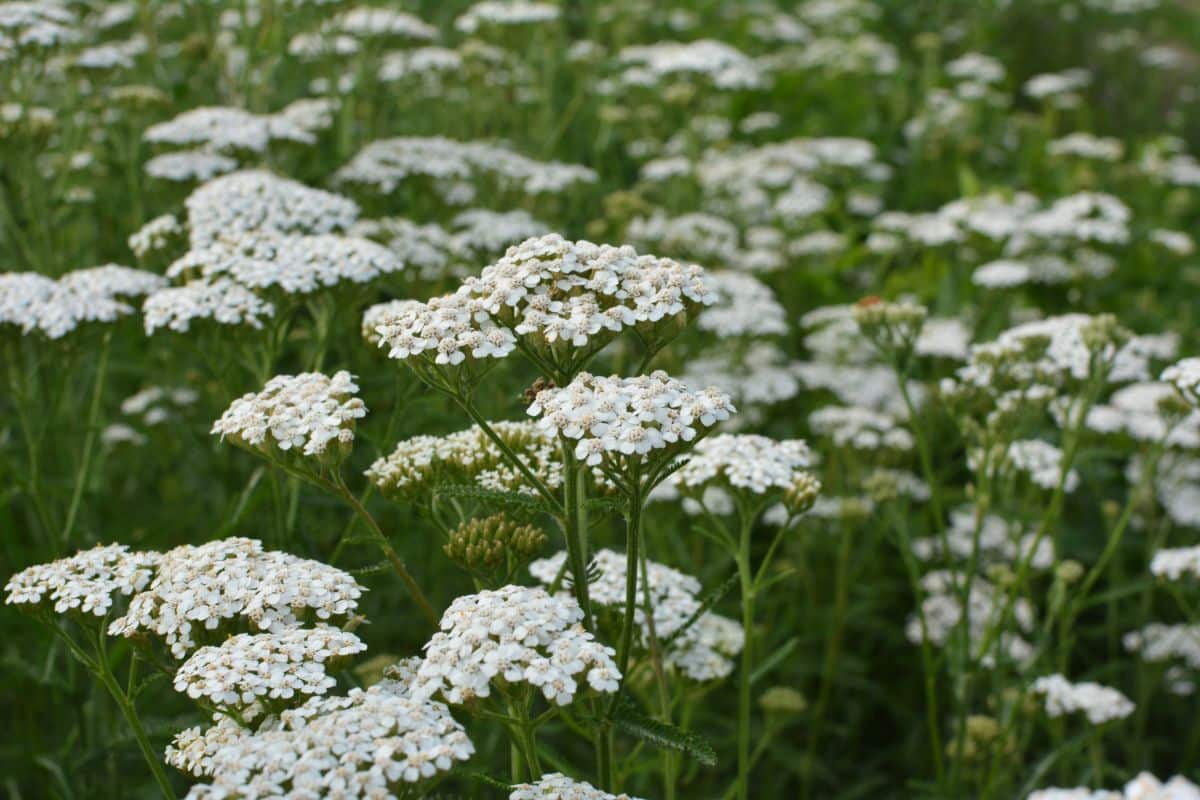
Although it is not mandatory, trimming yarrow during the autumn season can enhance the appearance of your garden. By removing the old, withered foliage of your yarrow plants, you can create neater lines in your flower beds. However, it’s important to exercise caution while pruning as yarrow starts to develop fresh basal leaves during this time, which are crucial for its growth in the upcoming year. Avoid damaging these new leaves while cutting back the plant to ensure healthy regrowth in spring. Another advantage of autumn pruning is that the discarded yarrow flowerheads can be used to add elegance to dried floral arrangements. Moving on to catmint (Nepeta spp.)…
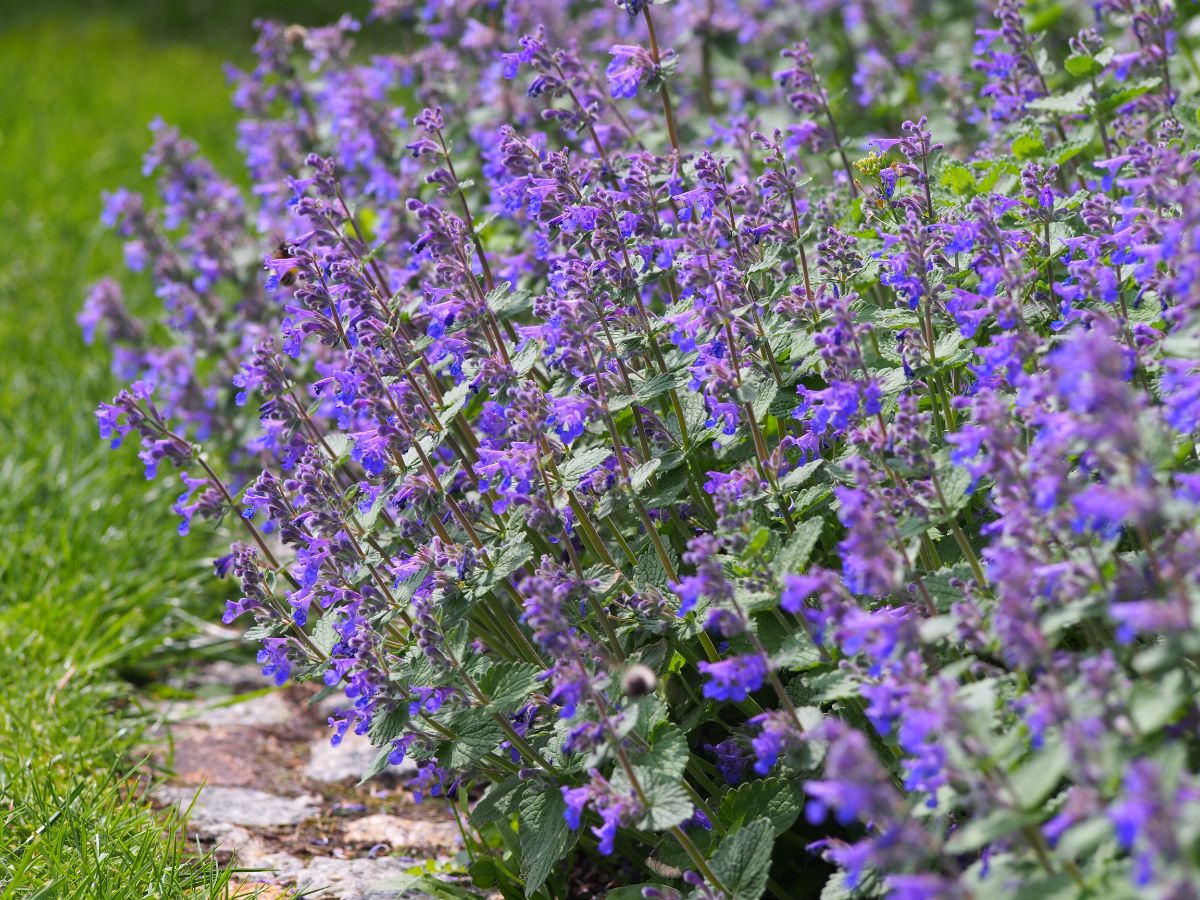
Autumn is the perfect season to trim your catmint. With its vibrant purple flowers, catmint is a gorgeous addition to any garden in late spring and summer. However, as fall arrives, this plant can start to look unkempt with its brown leaves and stems. Additionally, catmint tends to flop over as it grows, leading to a messy appearance by the end of the growing season.
Although you may be tempted to leave your catmint untouched through the winter, trimming the plant during the fall is recommended. Cut back the stems about 4 to 6 inches above the soil line, taking care not to trim too low and risk damage to the plant’s crowns. Additionally, catmint sprouts new leaves for next year’s growth during autumn, so avoid interfering with this process by pruning too heavily. On another note, Salvia (Salvia spp.) is also a great plant to grow.
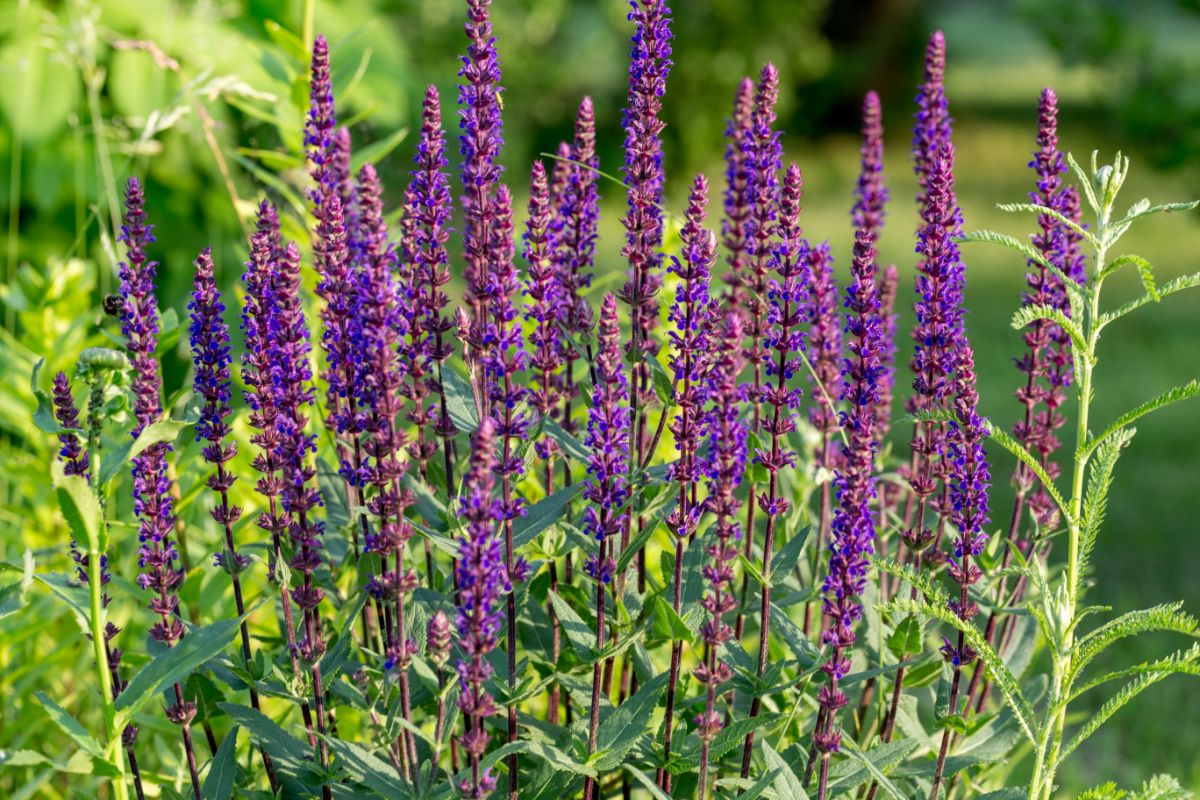
To prepare your garden for winter and make spring gardening easier, consider trimming your salvia plants. Salvia is a versatile plant that can thrive in various garden conditions and attract pollinators. However, when the plants begin to wither towards the end of the season, they may require some tidying up. Pruning them in the fall will not only keep your garden looking neater during the winter but will also simplify the preparation for spring. When pruning salvia in autumn, cut back plant stems above the new basal growth. It’s crucial not to over-prune as salvia, just like yarrow and catmint, can begin producing new growth in the fall. Over-pruning may hinder plant growth. If your salvia plants were pest or disease-free, you can compost the old plant material using hot or cold composting methods.
Additionally, you can also prepare your garden for winter by considering hostas. Hostas are beautiful plants that are easy to maintain and come in different colors and shapes. They can enhance your garden’s beauty and foliage with their leaves, which range from green to gold and blue. However, before winter sets in, it would be best to cut back the leaves and remove any dead foliage to prevent pests and diseases. Cut the leaves about two inches from the ground and discard any dead foliage. This will keep your hostas healthy and protected during the winter months.
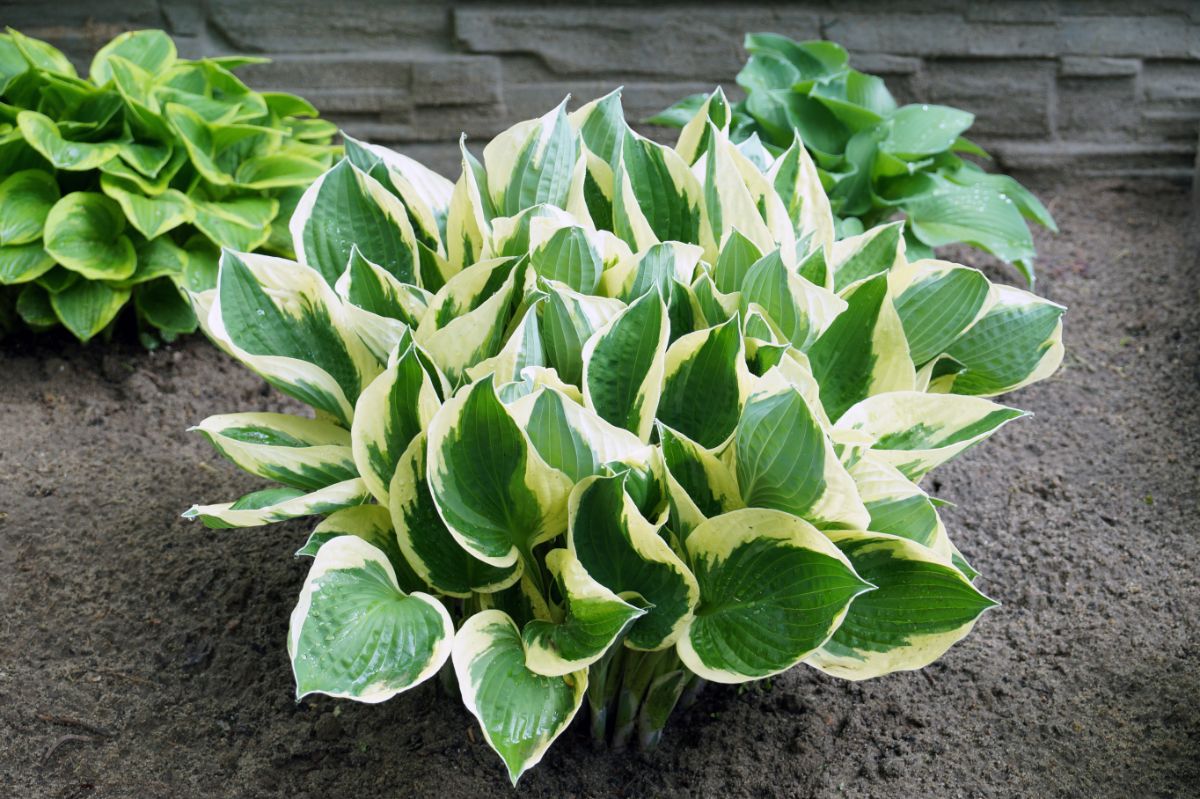
In order to decrease the number of slugs in your garden, consider pruning your hostas during the fall season. Hostas are often a popular choice when it comes to shaded gardens and can also serve as a low-maintenance groundcover. However, they tend to be a prime target for slugs and snails. These pests leave holes in the hosta leaves and slime trails behind, which can be quite frustrating for gardeners. What’s even worse is that slugs love to lay their eggs on hosta leaves during the autumn season! Fortunately, there is a simple solution to this problem that doesn’t involve using chemical pesticides. When your hostas start to turn brown or after the first hard frost, cut back your plants by 4 to 6 inches above the crown. This can help to reduce the number of slugs and snails in your garden. If you plan on composting the hosta leaves, be sure to check for any signs of slug eggs before doing so. Additionally, another lovely plant to consider adding to your garden is the hollyhock (Alcea rosea).
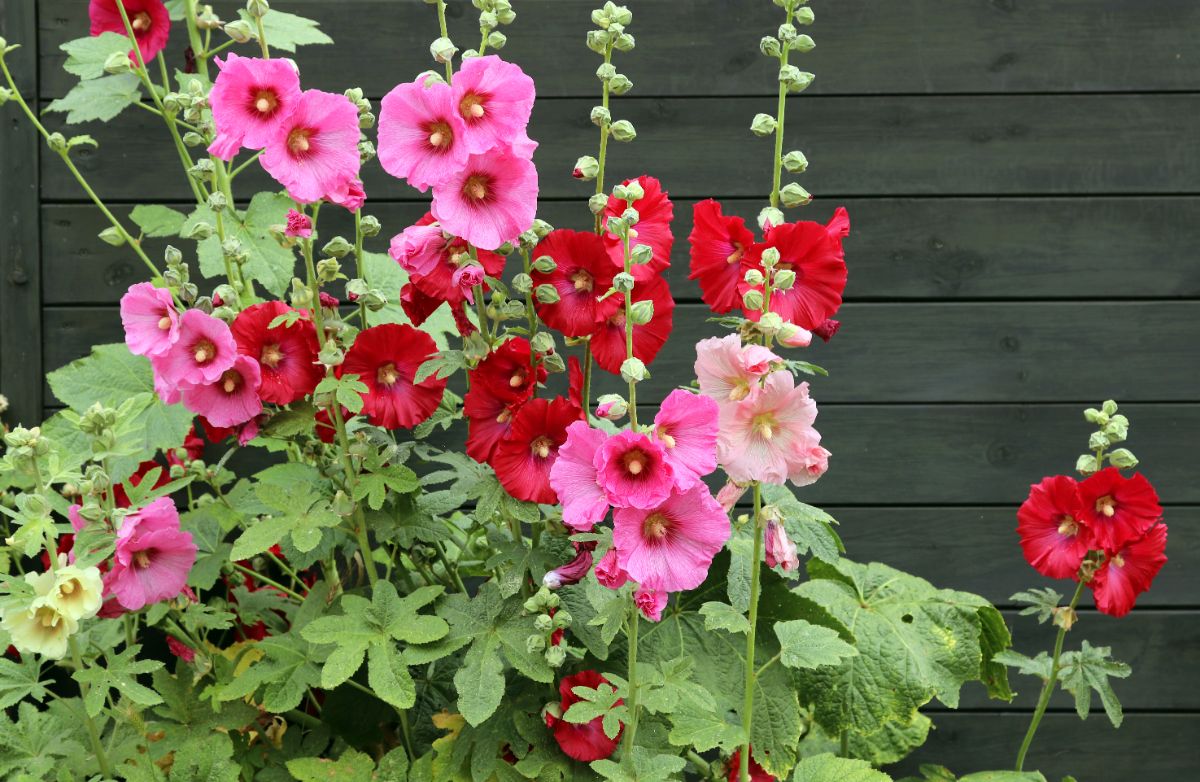
If you’re looking to keep your hollyhocks healthy and blooming, fall pruning is key in controlling rust disease. While these flowers are a popular addition to summer gardens, deadheading spent blooms can encourage new growth by directing your plant’s energy towards flower development. Additionally, cutting back hollyhock stalks later in the season can help keep your garden tidy and organized.
While cutting back isn’t always necessary, it’s crucial if your hollyhocks are suffering from rust disease. This fungal issue often appears as warty brown or yellow bumps on the undersides of plant leaves. Luckily, removing affected foliage in the autumn can help combat the problem.
Interestingly, hollyhocks are actually biennial plants that usually don’t start flowering until their second year. To produce more hollyhocks, hold off on pruning the stalks until after the plant goes to seed. On the other hand, if you’d like to prevent self-sowing, remove spent flowers before they have a chance to spread.
In addition to hollyhocks, bronze fennel (Foeniculum vulgare) is another great addition to any garden.
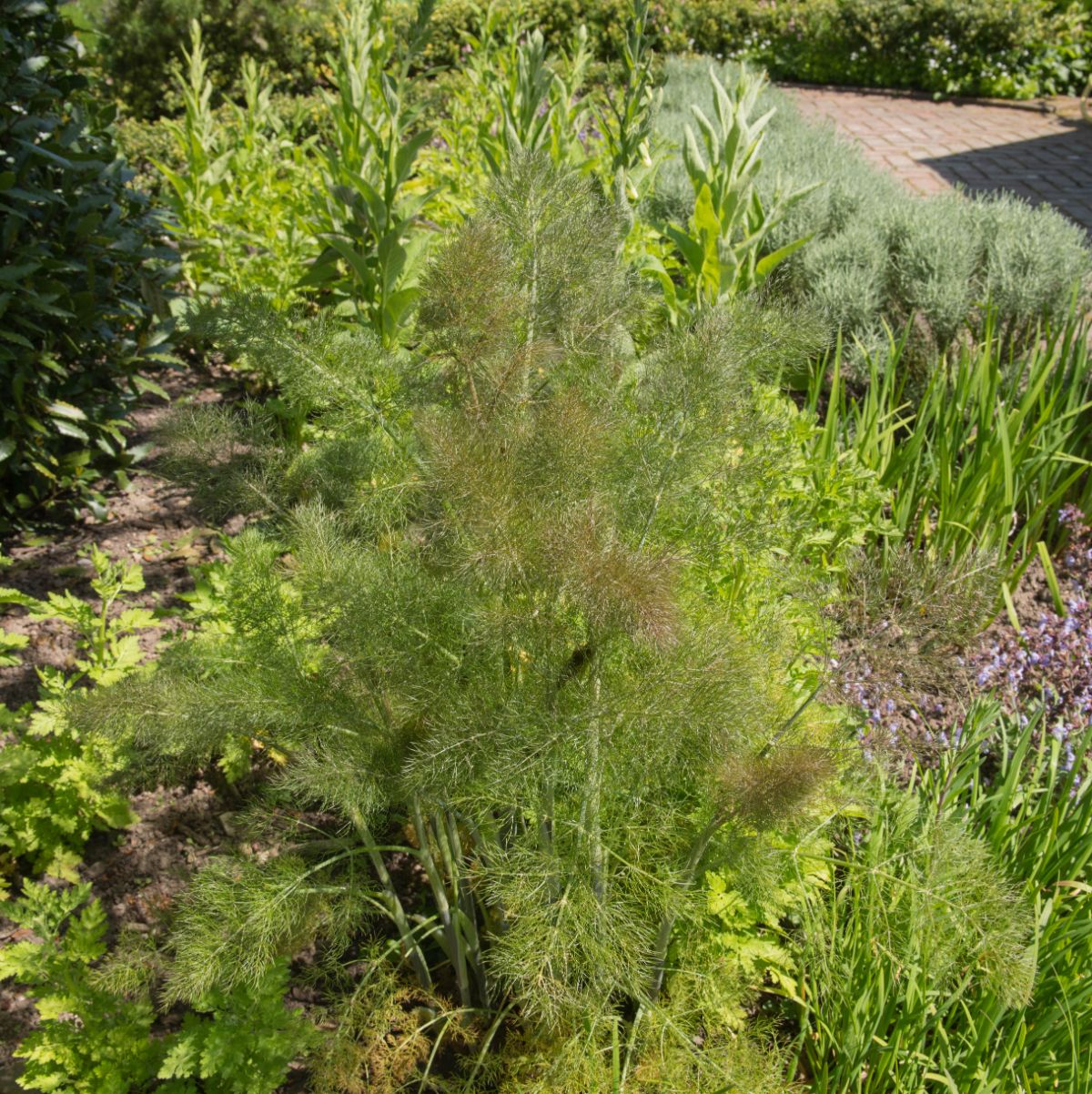
To maintain the appearance of your fennel plants, it’s recommended to prune off the leaves in the fall before they become mushy and unattractive. Bronze fennel is a stunning plant with delicate, feather-like leaves that can add a touch of lightness to any garden. This type of fennel is also a favorite among pollinators and serves as a vital host plant for swallowtail butterflies. However, if you notice that the butterflies have eaten the leaves down to the stems, it’s best to remove them altogether to improve the plant’s overall appearance. Even if there hasn’t been any damage from insects, the leaves may still become mushy after frost, which can make a mess in your garden. Therefore, it’s generally a good idea to prune back your fennel towards the end of the season. Despite fennel’s allelopathic properties, you can still compost any leftover plant debris as long as it’s not diseased. Another fantastic garden plant worth considering is Liatris, which has a unique, spiky appearance that can add some texture and interest to your landscape design.
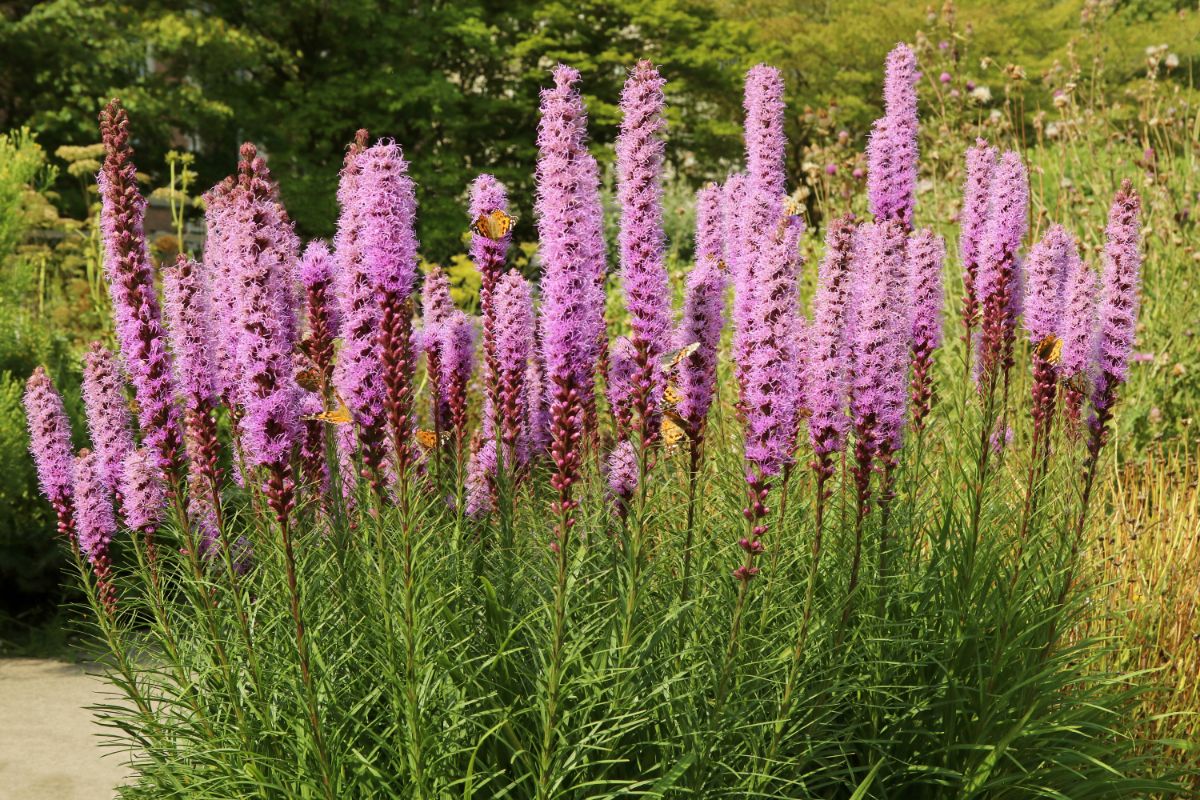
In order to maintain a tidy winter garden, it’s important to take care of spent liatrus stems. Known for their curious, columnar flowers, liatrus plants are a popular choice for pollinators and ornamental gardens alike. Plus, their grass-like leaves add texture and gentle movement to any garden bed. However, towards the end of the season, liatrus plants can start to look unkempt and messy. While some gardeners choose to cut them back after they stop flowering, it’s best to wait until fall to give your plants time to store energy for next year. To do so, simply gather up the leaves and flower stems in one hand and snip them down close to the ground with pruners. Come springtime, your liatrus plants will be ready to regrow without any extra maintenance required. Another great option for your garden is the Aquilegia vulgaris, or columbine plant.
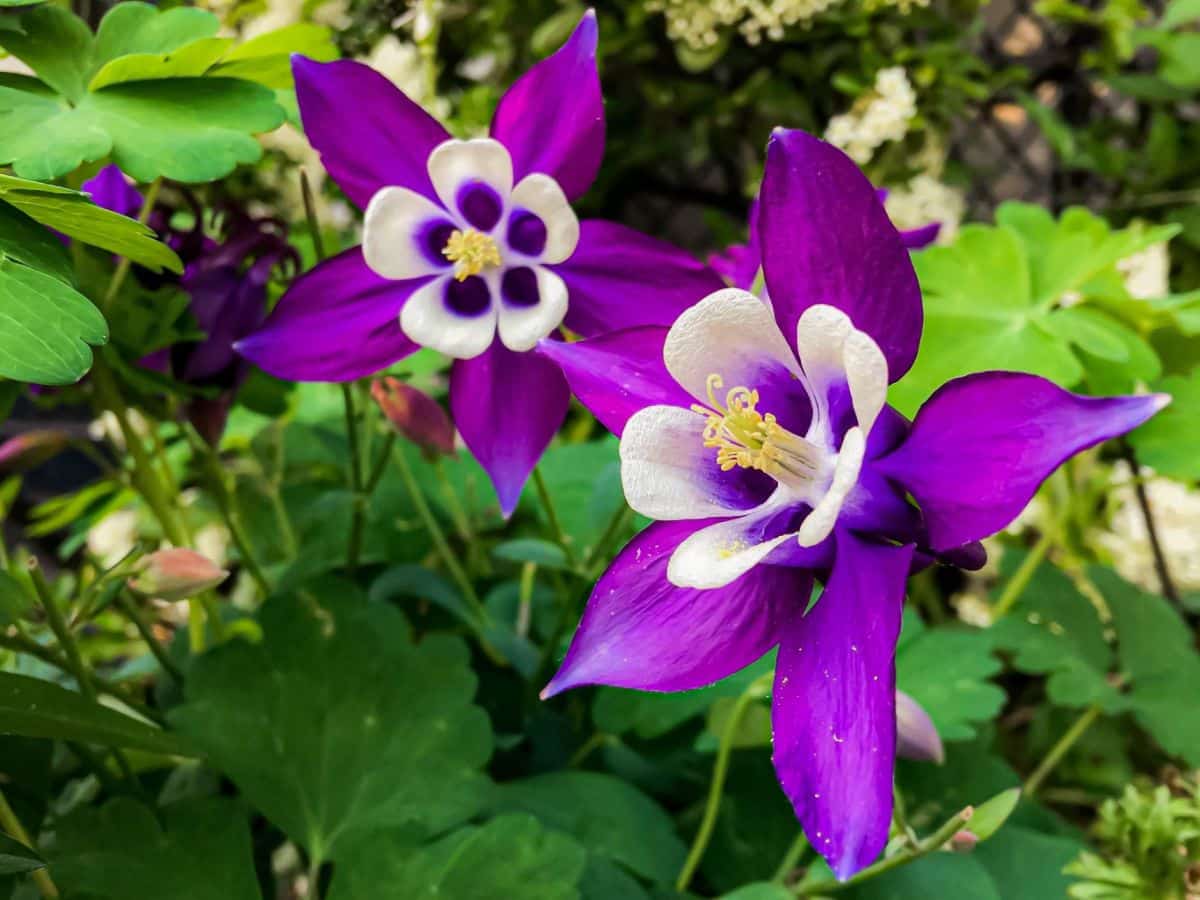
Columbines can be pruned in the fall to help reduce populations of pest insects. These flowers are a popular addition to spring gardens, attracting butterflies, hummingbirds, and other wildlife with their colorful blooms. While some gardeners choose to prune columbines after they bloom to tidy up the plant’s appearance, this can also be done in the fall if you want the plant to go to seed. Pruning in the autumn can prevent pests like leaf miners from overwintering and keep your garden looking clean. Removing spent foliage is especially helpful because columbine flowers early in the year, and less debris means an easier start for new growth in the spring. However, if you want your columbines to spread naturally, don’t prune too early and prevent self-sowing.
Common Questions:
-Can columbines be pruned in the fall?
Yes, pruning in the fall can help reduce pest populations, but it may also prevent self-sowing if done too early.
-Why is it beneficial to remove spent foliage?
Removing spent foliage can make it easier for new growth to emerge in the spring and keep your garden looking clean.
-What pests can fall pruning help control?
Fall pruning can help prevent pests like leaf miners from overwintering in your garden.

Fall pruning is a useful way to prevent pests and fungal diseases from overwintering in plants. Some perennials, like lilies and hostas, will benefit from fall pruning, while others may require winter protection or spring pruning. It’s essential to research the timing of pruning for each plant and disinfect pruning tools in between plants to prevent the spread of diseases. Isopropyl alcohol works fast as a disinfectant for pruning shears, but a 10% bleach solution may also work, depending on the required soaking time. Deadheading perennials can encourage more flowers to grow, but leaving them unpruned can provide more free perennials and food for wildlife.
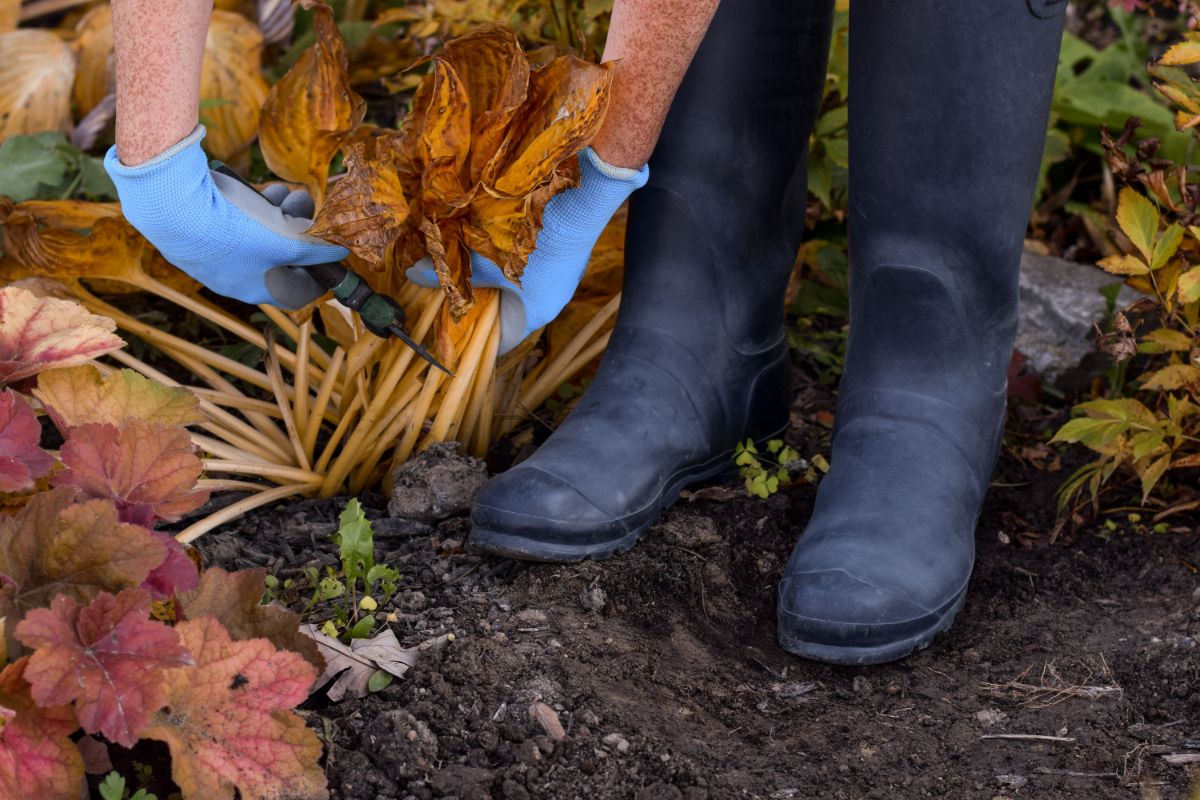
At the end of the fall gardening season, it’s essential to take some time to tidy up your garden. This may seem tiring, but it’s worth it as it helps prevent diseases and insect infestations while preparing your garden for spring. For beginners, pruning can be a daunting task as different plants require different care. However, with this straightforward guide and the fundamental tips we’ve shared, you’ll be able to master pruning in no time! In case you’re worried about making mistakes, we have a guide on the most common pruning errors to avoid, ensuring your first pruning experience is a success.





